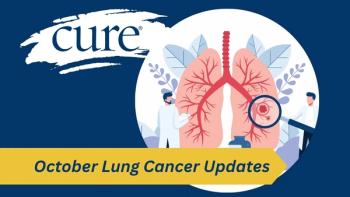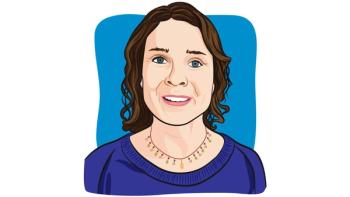
Kisqali Plus Aromatase Inhibitor Shows Benefits in HR+/HER2- Breast Cancer
Findings from the NATALEE trial show that the combination of Kisqali and an aromatase inhibitor resulted in disease-free benefits in a breast cancer subset.
For patients with hormone receptor (HR)-positive, HER2-negative early breast cancer, the combination of Kisqali (ribociclib) and nonsteroidal aromatase inhibitor (NSAI) therapy resulted in sustained improvements regarding invasive disease-free survival (iDFS; the time from treatment until the disease worsens) and distant disease-free survival (DDFS; the time a patient lives without disease recurring at a distant site in the body) when compared with NSAI alone, research has shown.
A four-year landmark analysis of data from the phase 3 NATALEE trial was presented at the
Adult patients with HR-positive, HER2-negative early breast cancer were eligible for enrollment on the trial. Those with prior endocrine therapy at 12 months or earlier before randomization were able to enroll. Investigators stratified patients based on anatomical stage, menopausal status, receipt of previous chemotherapy and geographic location.
With a median follow-up of 44.2 months across the intent-to-treat (ITT) population, the three-year iDFS rates were 90.8% with Kisqali plus NSAI versus 88.1% with NSAI alone, representing a difference of 2.7%. At four years, the respective iDFS rates were 88.5% versus 83.6% — a difference of 4.9%.
Of note, most iDFS events in each arm were associated with distant recurrence. The iDFS benefit with the Kisqali-based combination also extended across all key prespecified subgroups based on characteristics such as menopausal status, prior chemotherapy, region and prior endocrine (hormone) therapy.
READ MORE:
In terms of specific subgroup data, the iDFS rates among patients with stage 2 disease were 94.4% versus 92.7% at three years with a change of 1.7% and 93.9% versus 89.6% at four years with Kisqali /NSAI versus NSAI alone with a change of 4.3%, respectively. Among those with stage 3 disease, the respective three-year iDFS rates were 88.3% versus 84.8% with a change of 3.5%, and the four-year rates were 84.3% versus 78.4% with a change of 5.9%.
Regarding nodal status (if cancer has spread to the lymph nodes), the three-year iDFS rates among patients with N0 disease were 93.4% versus 90.8% with a change of 2.6% with Kisqali/NSAI versus NSAI alone, respectively; the four-year rates were 92.1% versus 87% with a change of 5.1%. For those with N1 to N3 disease, the three-year iDFS rates were 90.4% versus 87.7% with a change of 2.7%, and the four-year rates were 88.0% versus 83% with a change of 5%. With N0 disease, cancer has not spread to the lymph nodes, while with N1 to N3 disease cancer has spread to an increasing number of lymph nodes, according to the American Cancer Society.
“The results continue to support the benefit of adding three years of [Kisqali] to adjuvant [NSAI] in this broad population of HR-positive, HER2-negative early breast cancer at risk of recurrence,” study author Dr. Peter A. Fasching, an associate professor of gynecology and obstetrics translational medicine at the University Hospital Erlangen and Comprehensive Cancer Center Erlangen-EMN in Germany, said in a presentation on these data.
As of the data cutoff, 62.8% of patients in the experimental arm completed three years of treatment with Kisqali. Of note, 36.2% of patients discontinued treatment with Kisqali early, with 20% discontinuing due to side effects. The median duration of exposure to study therapy was 45.1 months in the Kisqali/NSAI arm compared with 45 months in the NSAI alone arm.
Data showed that treatment with Kisqali/NSAI produced enduring DDFS improvements compared with NSAI alone as well as a positive trend associated with OS. Fasching noted that follow-up for OS is still ongoing.
Any-grade side effects of special interest in the Kisqali/NSAI arm and NSAI alone arm included neutropenia (low count of neutrophils, a type of white blood cell, 62.8% versus 4.5%), arthralgia (joint pain, 38.8% versus 44.4%), liver-related toxicity (26.7% versus 11.4%), and nausea (23.5% versus 7.9%). The most common grade 3 or higher side effect of special interest in the Kisqali arm was neutropenia (44.4%). Side effects associated with the liver generally consisted of elevated alanine aminotransferase or aspartate aminotransferase without accompanying increases in bilirubin.
For more news on cancer updates, research and education, don’t forget to





